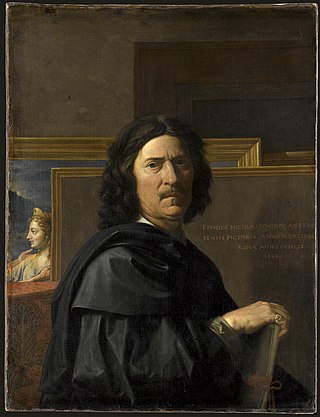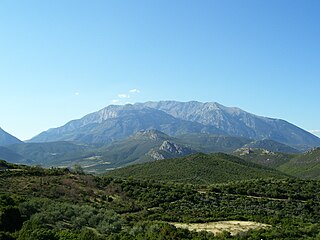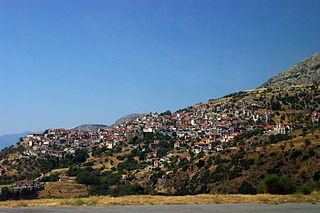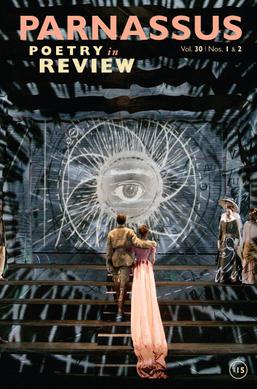
Nicolas Poussin was a French painter who was a leading painter of the classical French Baroque style, although he spent most of his working life in Rome. Most of his works were on religious and mythological subjects painted for a small group of Italian and French collectors. He returned to Paris for a brief period to serve as First Painter to the King under Louis XIII and Cardinal Richelieu, but soon returned to Rome and resumed his more traditional themes. In his later years he gave growing prominence to the landscape in his paintings. His work is characterized by clarity, logic, and order, and favors line over color. Until the 20th century he remained a major inspiration for such classically-oriented artists as Jacques-Louis David, Jean-Auguste-Dominique Ingres and Paul Cézanne.

State College is a borough and home rule municipality in Centre County, Pennsylvania, United States. It is a college town, dominated economically, culturally, and demographically by the presence of the University Park campus of The Pennsylvania State University.

Mount Parnassus is a mountain range of central Greece that is, and historically has been, especially valuable to the Greek nation and the earlier Greek city-states for many reasons. In peace, it offers scenic views of the countryside and is a major international recreational site with views of mountain landscapes. Economically, its rolling foothills and valleys host extensive groves of olive, a cash crop marketed world-wide since prehistory. The mountain is also the location of historical, archaeological, and other cultural sites, such as Delphi perched on the southern slopes of the mountain in a rift valley north of the Gulf of Corinth.

Thomas Cole was an English-born American artist and the founder of the Hudson River School art movement. Cole is widely regarded as the first significant American landscape painter. He was known for his romantic landscape and history paintings. Influenced by European painters, but with a strong American sensibility, he was prolific throughout his career and worked primarily with oil on canvas. His paintings are typically allegoric and often depict small figures or structures set against moody and evocative natural landscapes. They are usually escapist, framing the New World as a natural eden contrasting with the smog-filled cityscapes of Industrial Revolution-era Britain, in which he grew up. His works, often seen as conservative, criticize the contemporary trends of industrialism, urbanism, and westward expansion.
Arcadia often refers to a utopian vision of pastoralism and harmony with nature.

Arachova is a mountain town and a former municipality in the western part of Boeotia. Since the 2011 local government reform it is a municipal unit, part of the municipality Distomo-Arachova-Antikyra. It is a tourist destination due to its location in the mountains, its traditions and its proximity to the town of Delphi. The town is a popular day or weekend trip destination from Attica and a gathering place for the rich and famous. This is not to be confused with Caryae which is a town in the Southern Peleponnese that used to be called Arachova.

Northern Essex Community College (NECC) is a public community college in Essex County, Massachusetts. The college serves residents of the Merrimack Valley and Southern New Hampshire. It has campuses in Haverhill and Lawrence. The college is part of the Massachusetts Higher Education system. More than 6,600 students are enrolled in 70 credit associate degree and certificate programs and another 3,400 take noncredit workforce development and community education classes on campus, and at businesses and community sites across the Merrimack Valley. The school's athletic teams are known as the Knights. Northern Essex Community College is accredited by the New England Commission of Higher Education.

Parnassus: Poetry in Review was an American literary magazine founded in 1973. It ceased publication in 2019.

The San Zeno Altarpiece is a polyptych altarpiece by the Italian Renaissance painter Andrea Mantegna created around 1456–1459. It remains in situ in the Basilica di San Zeno, the main church of the Northern Italian city of Verona. Mantegna's style mixes Greco-Roman classical themes along with Christian subjects in this altarpiece. The central panel, along with the three paintings that comprise the predella, were taken in 1797 by the French. While the main, central scene was returned by the French to Verona in 1815, the three predella paintings in Verona today are copies, since the original ones remain in France at the Louvre (Crucifixion) and in the Musée des Beaux-Arts in Tours. The paintings are made with tempera on panel; not oil as mistakenly identified in one source.
In Greek mythology, Thyia was the Naiad-nymph of a spring on Mount Parnassos in Phokis and was a female figure associated with cults of several major gods.
Barbara Turner Smith is an American artist known for her performance art in the late 1960s, exploring themes of food, nurturing, the body, spirituality, and sexuality. Smith was part of the Feminist Movement in Southern California in the 1970s and has collaborated in her work with scientists and other artists. Her work has been widely exhibited and collected by major museums including the J. Paul Getty Museum, the Hammer Museum, MOCA, LACMA, and the Art Institute of Chicago.

The Frieze of Parnassus is a large sculpted stone frieze encircling the podium, or base, of the Albert Memorial in London, England. The Albert Memorial was constructed in the 1860s in memory of Prince Albert, the husband of Queen Victoria.

The Four Seasons was the last set of four oil paintings completed by the French painter Nicolas Poussin (1594–1665). The set was painted in Rome between 1660 and 1664 for the Duc de Richelieu, the grand-nephew of Cardinal Richelieu. Each painting is an elegiac landscape with Old Testament figures conveying the different seasons and times of the day. Executed when the artist was in failing health suffering from a tremor in his hands, the Seasons are a philosophical reflection on the order in the natural world. The iconography evokes not only the Christian themes of death and resurrection but also the pagan imagery of classical antiquity: the poetic worlds of Milton's Paradise Lost and Virgil's Georgics. The paintings currently hang in a room on their own in the Louvre in Paris.
By his absolute humility, by his effacement of himself, by his refusal to use any tricks or overstate himself, Poussin has succeeded in identifying himself with nature, conceived as a manifestation of the divine reason. The Seasons are among the supreme examples of pantheistic landscape painting.
Jamais peut-être, dans toute la peinture occidentale, des choses aussi nombreuses et parfois si difficiles n'avaient été dites avec une telle simplicité. Jamais un peintre ne s'était aussi pleinement identifié à l'ordre du monde. Mais cette identification n'est ni « une projection » ni une confidence : là est le sens de cette impersonalité que l'on a pu reprocher à Poussin, et qui fait sa grandeur.

Mary Caroline Richards was an American poet, potter, and writer best known for her book Centering: in Pottery, Poetry and the Person. Educated at Reed College, in Portland, Oregon, and at the University of California at Berkeley, she taught English at the Central Washington College of Education and the University of Chicago, but in 1945 became a faculty member of the experimental Black Mountain College in North Carolina where she continued to teach until the end of the summer session in 1951.

Parnassus is the annual literary arts magazine of Northern Essex Community College in Haverhill, Massachusetts. The magazine has been in publication since 1965, and was a bi-annual publication until 2008, when it switched to a yearly publication, with issues released at the end of each year's spring semester in May. Parnassus is a free publication, and copies can be found at the Haverhill campus of NECC while available.

Oedipus and the Sphinx is an 1864 oil on canvas painting by Gustave Moreau that was first exhibited at the French Salon of 1864 where it was an immediate success. It is now in the Metropolitan Museum of Art. The work was a fresh treatment of the established subject of the meeting between Oedipus and the Sphinx on the road outside Thebes, as described in Sophocles's play Oedipus Rex.
John Lonergan was an American artist, educator and writer. He worked for the Federal Arts Project. Lonergan worked in various mediums including gouache, drawing in charcoal and ink, lithography and screen printing. His art often depicted the sea, and the men who worked it.
Obsidian: Literature & Arts in the African Diaspora is a biannual literary magazine that was first published in 1975 by Alvin Aubert at SUNY Fredonia under the title Obsidian: Black Literature in Review. The magazine has undergone a number of name changes and publication venues over the years, before obtaining its current title in 2014 under editor-in-chief Duriel E. Harris. It is published by the Publications Unit at Illinois State University.
Chen Lok Lee was a Chinese-born American printmaker, painter, and educator based in Philadelphia, Pennsylvania.











